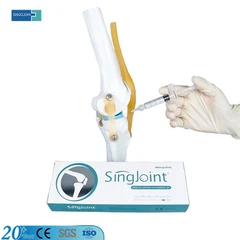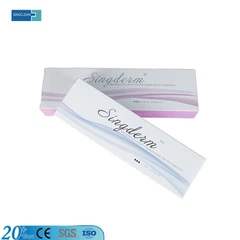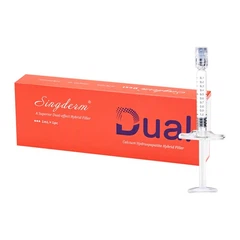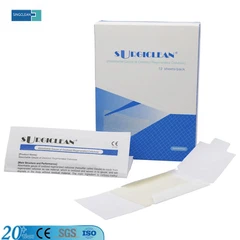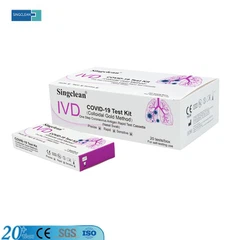Introduction
Hyaluronic acid (HA) injections remain one of the most widely used non-surgical treatments in aesthetic medicine. Driven by consumer preference for minimally invasive procedures, improvements in HA cross-linking technology, and expanding practitioner skills, HA dermal fillers continue to show robust growth and product diversification. This article summarizes the most popular HA filler types, recent market shifts, and practical implications for orthopedic and aesthetic product distributors.
Popular HA filler types and why they sell
1. Monophasic HA fillers (smooth, homogenous gels)
Monophasic fillers are the largest product segment in many markets because they produce natural-looking results and are easier to inject smoothly for soft-tissue augmentation and subtle contouring. They dominate clinical use for lip augmentation, superficial wrinkle correction, and overall softening of facial lines. Recent market analysis shows monophasic formulations accounted for roughly 70% of the global HA dermal filler market in 2024[5].
2. Biphasic HA fillers (particle-based gels)
Biphasic fillers contain HA particles suspended in a gel matrix. They tend to be used for deeper volumizing (e.g., cheeks, jawline) where structural lift is needed. Their tactile properties and predictable lifting capacity keep them relevant where higher G' (elasticity) is required.
3. Long-duration / higher-crosslinked HA (for structural lift)
As patient demand for longer-lasting results grows, more crosslinked, higher-viscosity formulations appear in portfolios to deliver 9–18+ month durability for deeper volumizing procedures. These products often command premium pricing and are a focus for premium brands.
4. Low-viscosity / micro-HA for fine lines and skin quality
Newer microdroplet techniques and low-viscosity HA gels are used for skin quality treatments ("skinboosters") and perioral/periocular fine lines, expanding the potential indications beyond simple wrinkle filling.
Market growth and recent changes
- The broader hyaluronic acid market (all applications) was estimated at ~USD 10.7 billion in 2024 and is projected to grow substantially through 2030 as both aesthetic and medical uses expand[2].
- Specifically, the hyaluronic acid–based dermal fillers market was estimated at about USD 4.08 billion in 2023, with forecasts pointing to accelerated growth (double-digit CAGR in many forecasts) toward 2030 as demand for injectables rises[3].
- Industry surveys show injectables remain among the most popular non-surgical procedures globally; hyaluronic acid fillers feature consistently in the top non-surgical treatments, alongside botulinum toxin. Professional societies report growth in minimally invasive injectables year-over-year[4].
Drivers behind the shift
- Patient preference for minimally invasive procedures (short recovery, lower perceived risk) continues to favor injectables. Professional society data indicate injectables remain the fastest-growing category among non-surgical procedures[4].
- Product innovation - better crosslinking chemistry, a wider range of rheological profiles (G'/viscosity), and tailored indications (lip, cheek, tear trough, skinboosters) - have expanded the clinical toolbox and increased per-patient product usage[3].
- Pricing and accessibility - more mid-tier and regionally manufactured products have made HA fillers accessible to more clinics and geographies, expanding procedure volume.
Implications for orthopedic & aesthetic product distributors
- Portfolio breadth matters. Stocking a range of rheological profiles (low to high G') allows clinics to match product to indication and capture a larger share of the clinic's spend - from aesthetic skinboosters to structural volumizers[5].
- Education & training are decisive selling points. Distributors that provide hands-on training (injection technique, complication management) and marketing support help clinics expand indications and procedure volumes[4].
- Differentiate with data. Use market numbers (global HA market size, dermal filler growth rates) and product evidence (clinical studies, re-treatment intervals) to justify pricing tiers and stocking decisions[2].
Click to know information about Medical Sodium Hyaluronate Gel
Short note on "viscosupplement" vs "aesthetic HA"
Although both use HA chemistry, viscosupplementation targets joints (orthopedic indication) with different formulations and regulatory pathways than dermal fillers used in aesthetics. Distributors active in both markets should maintain separate product lines, labeling, and clinician education programs tailored to each specialty. Market estimates for viscosupplementation show distinct growth patterns driven by osteoarthritis prevalence and reimbursement dynamics[1].
Practical recommendations (for distributors)
1. Curate at least three HA rheology tiers: skinboosters/low-viscosity, soft tissue/monophasic, and high-G' volumizers[5].
2. Offer bundled training + starter kits to new clinics and flexible financing for high-ticket premium products[4].
3. Track local procedure volume trends vs. national reports to align inventory with fastest-growing indications (e.g., lips, cheek augmentation, tear troughs)[3].
About Singclean Medical
SingClean supplies advanced orthopaedic and aesthetic injectables to clinics and hospitals across the region. We specialize in high-quality hyaluronic acid products for both viscosupplementation and aesthetic applications, through close collaboration with global distributors and healthcare providers, Singclean continues to drive innovation in orthopedics, aesthetics and regenerative medicine.
Key data sources and links
[1] Global Market Insight - Viscosupplementation Market.
[2] Grand View Research - Hyaluronic Acid Market (market size 2024, forecast).
[3] Grand View Research - Hyaluronic Acid–based Dermal Fillers Market (dermal fillers size & forecast).
[4] ISAPS - Global Survey 2023 (non-surgical procedures and trends).
[5] Mordor Intelligence - Monophasic segment share (~70% in 2024).

